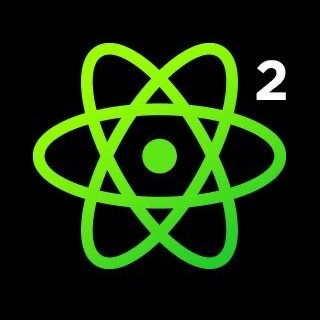Haris is talking about the newly open-sourced library Restyle (https://github.com/Shopify/restyle); how it addresses many problems and pain points developers experience when managing evolving styles and theme support (gotta have dark mode!) in a React Native app.
Styles and Theming with Restyle in React Native
FAQ
The Arrive app is developed by Shopify and is designed to help users keep track of all their online orders efficiently.
Key challenges included managing an ever-growing number of colors, avoiding code duplication in fonts, and determining the specificity needed for font styles.
Restyle provides a type-enforced system to build UI components with integrated theming capabilities, simplifying the implementation of features like dark mode and reducing code duplication.
The Arrive app is primarily built using React Native, accounting for 95% of its development, with the rest relying on native modules for iOS and Android.
Restyle uses a color palette system to manage colors more efficiently. Colors are named contextually (like 'CardPrimaryBackground'), which simplifies adding and modifying colors without affecting the overall app.
The theme provider in Restyle uses a global theme object that contains values for colors, spacing, and other properties, which are then passed into components to ensure consistency across the app.
Dark mode is handled by creating a new theme that overrides the necessary color values from the default theme, which can then be toggled using a state management hook like useState.
Restyle provides two predefined components, Box and Text, which are optimized to use theme properties directly, making them more efficient than the default View and Text components in React Native.
Video Summary and Transcription
Today's Talk focuses on styles and theming in React Native, specifically from the perspective of the arrive app. The challenges faced with managing colors and font styles are addressed by Restyle, which provides a type-enforced system for building UI components with themability. The implementation of color palettes, spacing, and dark mode is discussed, along with the benefits of using Restyle's predefined components. TypeScript's autocompletion and other advantages are highlighted, and listeners are encouraged to explore the project on GitHub for more features.
1. Introduction to Styles and Theming in React Native
Today we'll be chatting about styles and theming in react native from the perspective of the arrive app. We faced issues with managing colors and font styles. Restyle solved these problems by providing a type enforced system for building UI components with themability baked in. Restyle expects a defined global theme object.
Thanks for watching. I'm a senior engineer at Shopify based in Toronto, Canada. I work specifically on the client team on the arrive app. It's an app that helps keep track of all of your online orders. I also run an online store called rapid supply which sells apparel pins, stickers, and accessories for developers and other tech enthusiasts.
So today we'll be chatting about styles and theming in react native from the perspective of the arrive app and the experiences that I gained while working on the app. React, sorry, the arrive app is 95% react native with the remaining portions being relying on a couple of native modules for both iOS and Android. I'll be talking about some of the main problems that we faced when it came to theming and styling for the app and how our restyle library helps solve those problems.
The first issue that we came across revolved around managing colors. Colors are notoriously hard to name, they're hard to keep track of. They became super hard to maintain as more and more colors got added or old colors need to be adjusted to meet changing needs for the app. The second issue revolved around managing font styles. First of all, like we had far too much code duplication throughout the app, we needed to write down multiple different style declarations for every single text component that we had in our app. This required far too much code all over the place and became super hard to manage. One of the first things we did was to try and simplify this is to build out a font styles object that defines some of our default font styles and then implement those and use those as necessary for the different text components throughout our app. This worked okay, but we started to run into issues when, for example, we'd have a new font style that was exactly the same as one that existed, but had one small change. So we weren't sure whether we needed to introduce a brand new font style or use the font style that we already have with one override. And the second problem that we had was trying to figure out how broad or specific the font styles needed to be. Was body far too generic? Was call to action far too specific? In the latter scenario, if we came across a situation where we needed to use the exact same font style that call to action already implemented, but it was for something that wasn't a call to action, we didn't know whether we needed to refactor the entire code base to accommodate a renamed call to action font style or just use it as is and kind of deal with the awkward consequences of losing some of that consistency.
Dark mode and theming is obviously a huge portion of mobile apps, and we knew that we wanted to implement and tackle dark mode. But we already had a number of issues with regards to themes, with regards to colors and font styles. And the thought of adding more colors and more font style alternatives just didn't seem like the right approach when we already had problems that we were trying to figure out. So this is sort of where Restyle comes into play. Restyle is an open source library. It provides a type enforced system for building UI components powered by TypeScript. Its themability is baked right in from the get go, so if and when you decide to implement dark mode or a theme, it's extremely trivial and easy to do so. I'm going to walk you through some of the best practices or concepts that come about through Restyle and how they solved the problems that we had while working on Arrive. Restyle expects you to have a defined theme. This is a global theme object with a set of values for colors, spacing, breakpoints, and a number of other things. This theme is then used by passing into the theme provider using the theme prop.
2. Color Palette, Spacing, and Dark Mode
Every design system commonly has a color palette with base colors and shades. We implemented and used this palette to define colors within our theme. Context-driven color names made it easy to modify and manage colors. Spacing was simplified using a multiplication system. Restyle provides predefined components, Box and Text, which utilize the theme and allow for custom styles. Implementing Dark mode involves building a new theme and toggling the value. Restyle components automatically adjust to the current theme. The development experience is enhanced by TypeScript's autocompletion and other benefits. Check out the project on GitHub for more features. Thanks for listening!
So, how do colors work now? The first thing that we did was realize that, hey, every design system will commonly have a color palette. These palettes will include a number of base colors with lighter and darker shades. So the first thing we did was implement this palette without worrying about the theme. The next thing we did was then use this palette to define the colors within our theme. And the names that we gave each of our colors was very context-driven.
So, for example, we had CardPrimaryBackground and ButtonPrimaryBackground. This scenario made it very easy for us to add new colors to the palette, modify colors in our palette and change the implementation of that palette for a very specific context without worrying about any ripple effects that it might have across the app. This made it very easy to introduce new colors as well and just keep an overall well-managed state with regards to colors.
Spacing became a lot easier when we implemented a number multiplication system. We chose one specific number and all of our spacing essentially just followed multiples of that spacing number. With regards to naming, we used a T-shirt-style naming convention, so we had small, medium, large, XL. This is pretty nice because you can easily extend this to add smaller and larger spacing numbers using the X notation. So you could implement double XL or XS for a smaller spacing measurement.
Restyle also provides two predefined components called Box and Text. We realized that the default View and Text components just weren't the best starting points, so we need to override these with the Text and Box components. These utilize the theme right off the bat. You can pass in Style properties using Props to the Text and Box components. Color properties and measurement properties all map to values you've provided in your theme. You can also pass in a Text variant to apply a predefined Text style that you'll have defined in your theme. The Box provides a similar experience to the Text component but adds a number of additional props for padding, margin, alignments, and borders.
How do we tackle Dark mode now? It's super simple. The first thing we need to do is build a new theme based off of the default theme. The only thing we're doing here is overriding the colors that we need to change for our Dark mode theme. The next thing we need to do is find a way to be able to store that value someplace and toggle the value back and forth. In this case I'm using a UState hook to set the Dark mode value. Based on that value we pass in DarkTheme or Theme to the theme provider. And that's literally it. Your restyle components now automatically adjust to accommodate the current theme.
The dev experience for this entire process is also super awesome since this is all backed by TypeScript. As you're developing your app, as you're styling things, things automatically auto-complete and you get all the other benefits that TypeScript provides. There's a number of other features that we didn't get a chance to talk about today so I highly recommend checking out the project on GitHub. Thanks so much for having me today and for listening, check out restyle on GitHub and Shopify's career page if you're looking for a new gig. Thanks so much.
Check out more articles and videos
We constantly think of articles and videos that might spark Git people interest / skill us up or help building a stellar career
Workshops on related topic
Tests rely on many conditions and are considered to be slow and flaky. On the other hand - end-to-end tests can give the greatest confidence that your app is working. And if done right - can become an amazing tool for boosting developer velocity.
Detox is a gray-box end-to-end testing framework for mobile apps. Developed by Wix to solve the problem of slowness and flakiness and used by React Native itself as its E2E testing tool.
Join me on this workshop to learn how to make your mobile end-to-end tests with Detox rock.
Prerequisites- iOS/Android: MacOS Catalina or newer- Android only: Linux- Install before the workshop
In this three-hour workshop we’ll address these questions by discussing how to integrate Detox into your development workflow. You’ll walk away with the skills and information you need to make Detox testing a natural and productive part of day-to-day development.
Table of contents:
- Deciding what to test with Detox vs React Native Testing Library vs manual testing- Setting up a fake API layer for testing- Getting Detox running on CI on GitHub Actions for free- Deciding how much of your app to test with Detox: a sliding scale- Fitting Detox into you local development workflow
Prerequisites
- Familiarity with building applications with React Native- Basic experience with Detox- Machine setup: a working React Native CLI development environment including either Xcode or Android Studio
Appflow is the cloud mobile DevOps platform built by Ionic. Using a service like Appflow to build React Native apps not only provides access to powerful computing resources, it can simplify the deployment process by providing a centralized environment for managing and distributing your app to multiple platforms. This can save time and resources, enable collaboration, as well as improve the overall reliability and scalability of an app.
In this workshop, you’ll deploy a React Native application for delivery to Android and iOS test devices using Appflow. You’ll also learn the steps for publishing to Google Play and Apple App Stores. No previous experience with deploying native applications is required, and you’ll come away with a deeper understanding of the mobile deployment process and best practices for how to use a cloud mobile DevOps platform to ship quickly at scale.
But it doesn’t have to be this way. React Native Testing Library (RNTL) is a great library for component testing, and with the right mental model you can use it to implement tests that are low-cost and high-value. In this three-hour workshop you’ll learn the tools, techniques, and principles you need to implement tests that will help you ship your React Native app with confidence. You’ll walk away with a clear vision for the goal of your component tests and with techniques that will help you address any obstacle that gets in the way of that goal.you will know:- The different kinds React Native tests, and where component tests fit in- A mental model for thinking about the inputs and outputs of the components you test- Options for selecting text, image, and native code elements to verify and interact with them- The value of mocks and why they shouldn’t be avoided- The challenges with asynchrony in RNTL tests and how to handle them- Options for handling native functions and components in your JavaScript tests
Prerequisites:- Familiarity with building applications with React Native- Basic experience writing automated tests with Jest or another unit testing framework- You do not need any experience with React Native Testing Library- Machine setup: Node 16.x or 18.x, Yarn, be able to successfully create and run a new Expo app following the instructions on https://docs.expo.dev/get-started/create-a-new-app/


























Comments